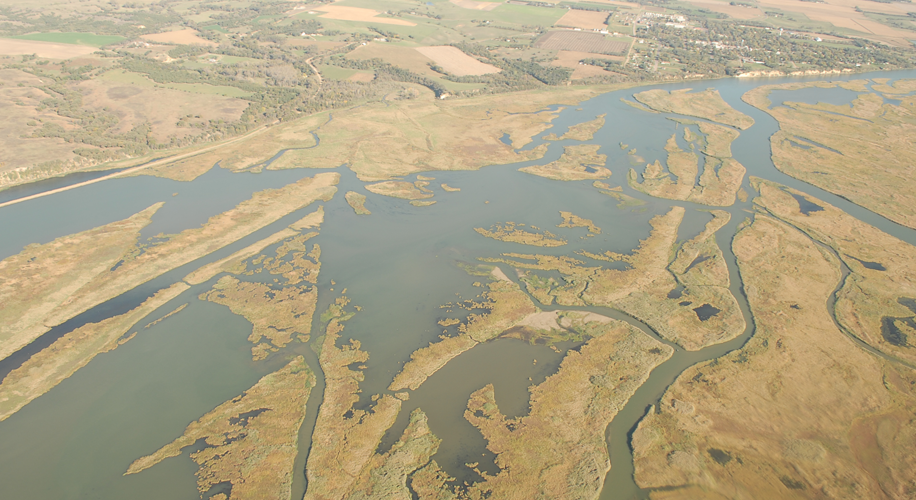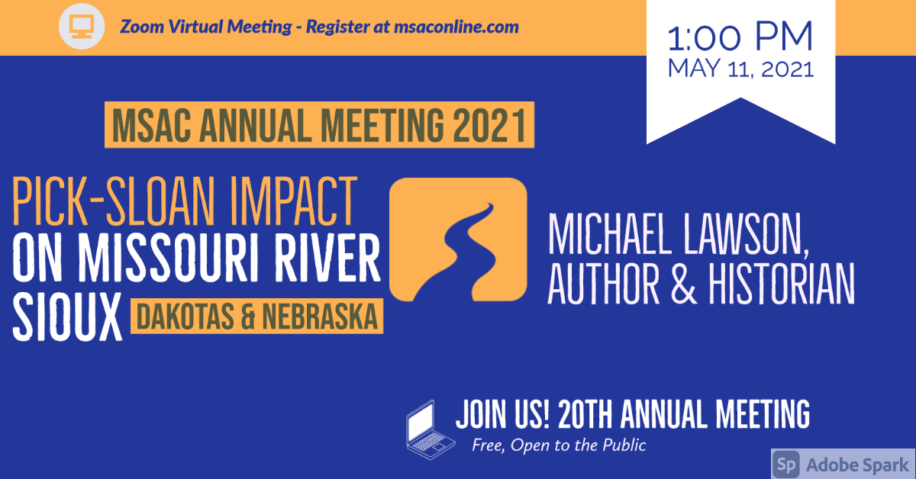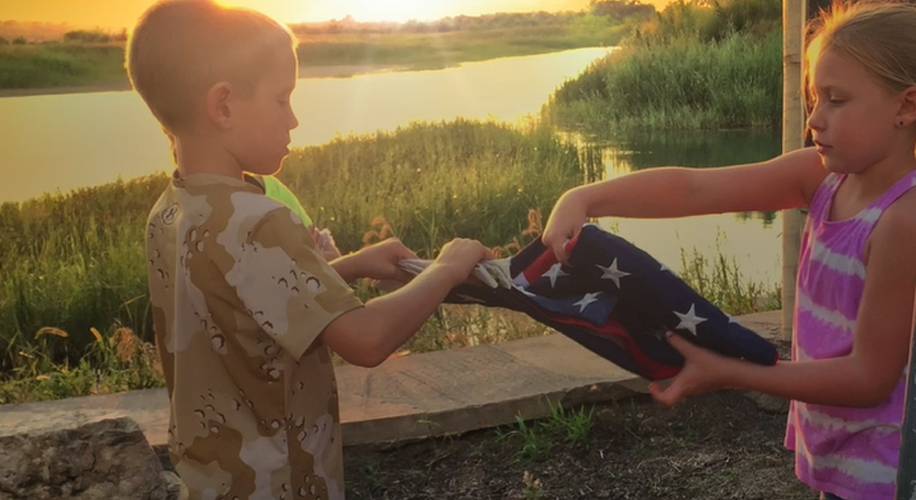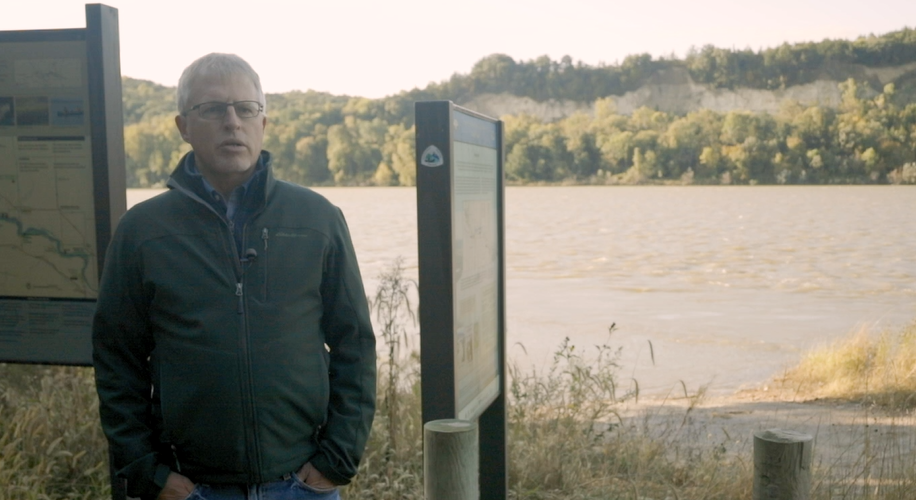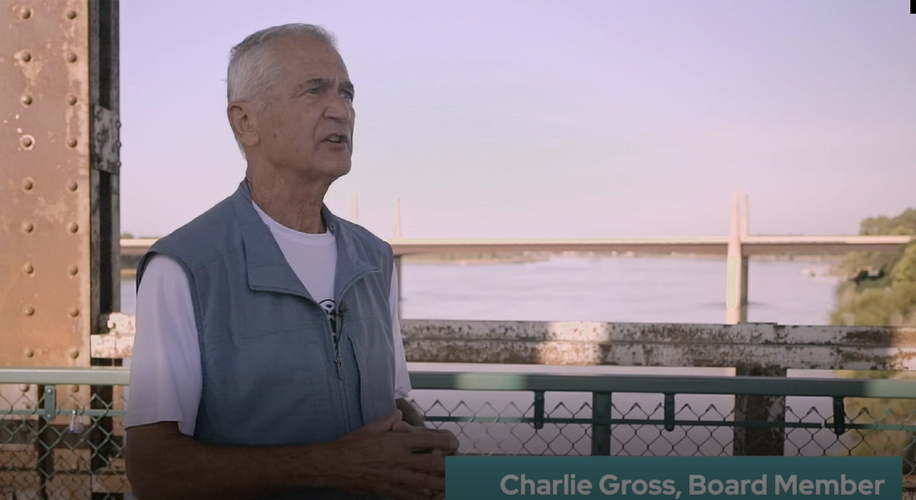Time: 9 am to 11 am
Date: Thursday, Sept. 17, 2021
Location: NFAA Easton Yankton Archery Center
(YANKTON, SD) – Learn more about sediment management possibilities for the Lewis and Clark Lake region at a public open house beginning at 9 a.m. Thursday, June 17 at the NFAA Easton Yankton Archery Center, 800 Archery Lane, in the Community Center (indoor tennis courts building).
The event is hosted by the Missouri Sedimentation Action Coalition (MSAC) in coordination with study partner the US Army Corps of Engineers (USACE). The open house wraps up a two-day Solutions Workshop attended by five reservoir sediment management experts, USACE staff and MSAC representatives. The open house will feature six stations which the public can visit and hear brief updates on topics ranging from the reservoir’s history to innovative solutions discussed in the Solutions Workshop. Within an hour, a person will have an opportunity to hear from each of the experts. MSAC will gather the public’s feedback at the open house and afterwards by email via comments@keepitwater.org. The open house runs 9 a.m. to 11 a.m.
“We wanted to approach sediment management in a new way by gathering a cadre of subject matter experts to brainstorm ideas on sustaining the reservoir along with addressing the impacts felt upstream in the delta,” said Sandy Stockholm, MSAC executive director. “The participants invited to take part have decades of experience in sediment management. After an intense two days and earlier prep work with the small group, we want to discuss goals of Phase 2 and workshop results with the public June 17.”
The five sediment management experts joining MSAC representatives and USACE, Omaha District staff are:
- Greg Morris: Gregory L. Morris, P.E., Ph.D., possesses key technical knowledge on reservoir sedimentation management strategies and specializes in hydrology, hydraulics, water supply, civil engineering and environmental studies. Dr. Morris has 45 years of professional engineering experience, working internationally. He has worked and lectured in more than 30 countries over 5 continents and is known for his expertise in developing environmentally sustainable fluvial engineering strategies. Dr. Morris was the lead author of the Reservoir Sedimentation Handbook (McGraw-Hill Book Co – 1998).
- Rollin Hotchkiss: Rollin Hotchkiss, Ph.D, P.E., D.WRE, F.ASCE, possesses key technical knowledge on reservoir sedimentation management strategies and the economics of sustainable reservoir management. Dr. Hotchkiss has nearly 30 years of experience as a civil and environmental engineering professor in Nebraska, Washington and Utah. He is a member of the National Reservoir Sedimentation and Sustainability Team. Dr. Hotchkiss has authored or co-authored more than 150 technical papers and was the 2017 recipient of the American Society of Civil Engineers Hydraulic Structures Medal.
- Meg Jonas: Margaret (Meg) Jonas, retired USACE hydraulic engineer, possesses key technical knowledge on reservoir management strategies and USACE procedures. In over 35 years with USACE, she worked at Omaha and Baltimore Districts (hydraulic and sediment issues), the Engineer Research & Development Center (research hydraulic engineer), and at Headquarters USACE (senior hydraulic engineer in the Hydraulics, Hydrology & Coastal Community of Practice). She had a career interest in river engineering, stream restoration, and watershed sediment processes. She was the USACE representative to the Interagency Subcommittee on Sedimentation, and worked to get ACWI passage of a resolution encouraging the development of sedimentation management plans.
- Tim Welp: Tim Welp is a Research Hydraulic Engineer at the Coastal Hydraulics Laboratory of the USACE Research and Development Center (ERDC). He has been involved in developing innovative dredging and dredged material placement equipment and methodologies for over 25 years. He is the Dredged Material Management Focus Area Lead in the USACE Dredging Operations and Environmental Research (DOER) program and editor and a prime co-author of the USACE Dredging and Dredged Material Management Engineer Manual. While his research and development activities have historically focused on application to navigation channels, the increasing awareness and need to provide more sustainable reservoir sediment management technologies has led to his participation to both better transition conventional dredging technologies as well as demonstrate, and evaluate emerging dredging technologies as solutions to the reservoir sediment challenge.
- John Shelley: Dr. John Shelley is a hydraulic/sedimentation engineer at the USACE, Kansas City District. Dr. Shelley has analyzed reservoir sedimentation and sediment management at multiple reservoirs, and is currently engaged in analysis of sedimentation on 17 reservoirs in the Kansas River basin. Dr. Shelley is a USACE expert on river bed degradation and other sedimentation issues for the lower 500 miles of the Missouri River. Dr. Shelley co-instructs the USACE sedimentation modeling course and has planned and carried out specific trainings on reservoir sediment management for engineers, regulators, planners, and managers.
The sediment imbalance around Gavins Point Dam creates problems upstream, downstream and within the reservoir. Currently, Lewis and Clark Lake is estimated to have lost 30% of its total water storage capacity to sediment. Missouri River tributaries have experienced bed aggradation, where sediment accumulates raising the levels of the streambeds. Absence of sediment transported downstream of Gavins Point Dam has resulted in channel degradation, or erosion of the riverbed. By the year 2045, Lewis and Clark Lake is projected to be 50% full of sediment if nothing changes.
In 2019, MSAC and stakeholders requested that the USACE provide technical assistance in developing a sediment management plan for the reservoir and region with an ultimate goal of sustainability of Lewis and Clark Lake reservoir and conservation of its greatest benefits.
The sediment imbalance has created an increase in surface and ground water elevations resulting in lost land productivity, transportation limitations, housing relocations and flood risk. The delta limits recreation, the ability to reliably take reservoir water for water supply and irrigation and limits the storage volume for water in the reservoir.
Phase 2 of the Lewis and Clark Sediment Management Plan Section 22 Planning Assistance to States study kicked off in February. To explore the full spectrum of possible solutions to manage sediment at Lewis and Clark Lake and upstream, study partners organized a Solutions Workshop, with tours of the delta June 15 and a brainstorming workshop June 16. The small group of participants are set to discuss new ideas and applications, with a focus on innovation. Over the past few years, practitioners have increasingly looked for new, novel, and creative solutions to collect and transport sediment trapped by reservoirs.
The workshop is one part of a 12 to 18-month study which will also consider an economic analysis of three dredging scenarios. The USACE’s standard economic model will be applied to determine the cost/benefit ratio for construction of each one. In addition, dredging will be modeled with alternative discount rates and the Life-Cycle economic model, which considers the value of preserved benefits. Information gathered will provide a broader view of the costs and benefits of sediment management in general that can be applied to weigh other techniques.
Solutions Workshop participants will work to produce a list of ideas and a simplified cost estimate. Ideas that show engineering and economic promise will be recommended for a more detailed investigation in Phase 3.
“This is not only a Missouri River problem. Reservoirs all over the United States and world are trapping sediment, limiting their useful lives and creating challenges downstream. Phase 2 isn’t just about identifying a way to manage and transport sediment, but also answering questions of how are we weighing decisions to act,” Stockholm said.
Visit the open house June 17 in Yankton to learn more and provide feedback. Additional information will be provided at MSAC’s website: www.keepitwater.org. Comments can be left on forms provided at the open house or emailed to MSAC at comments@keepitwater.org. To show appreciation of the public’s involvement and support of our park systems, a drawing will be held at the event for one of four free state park passes.

